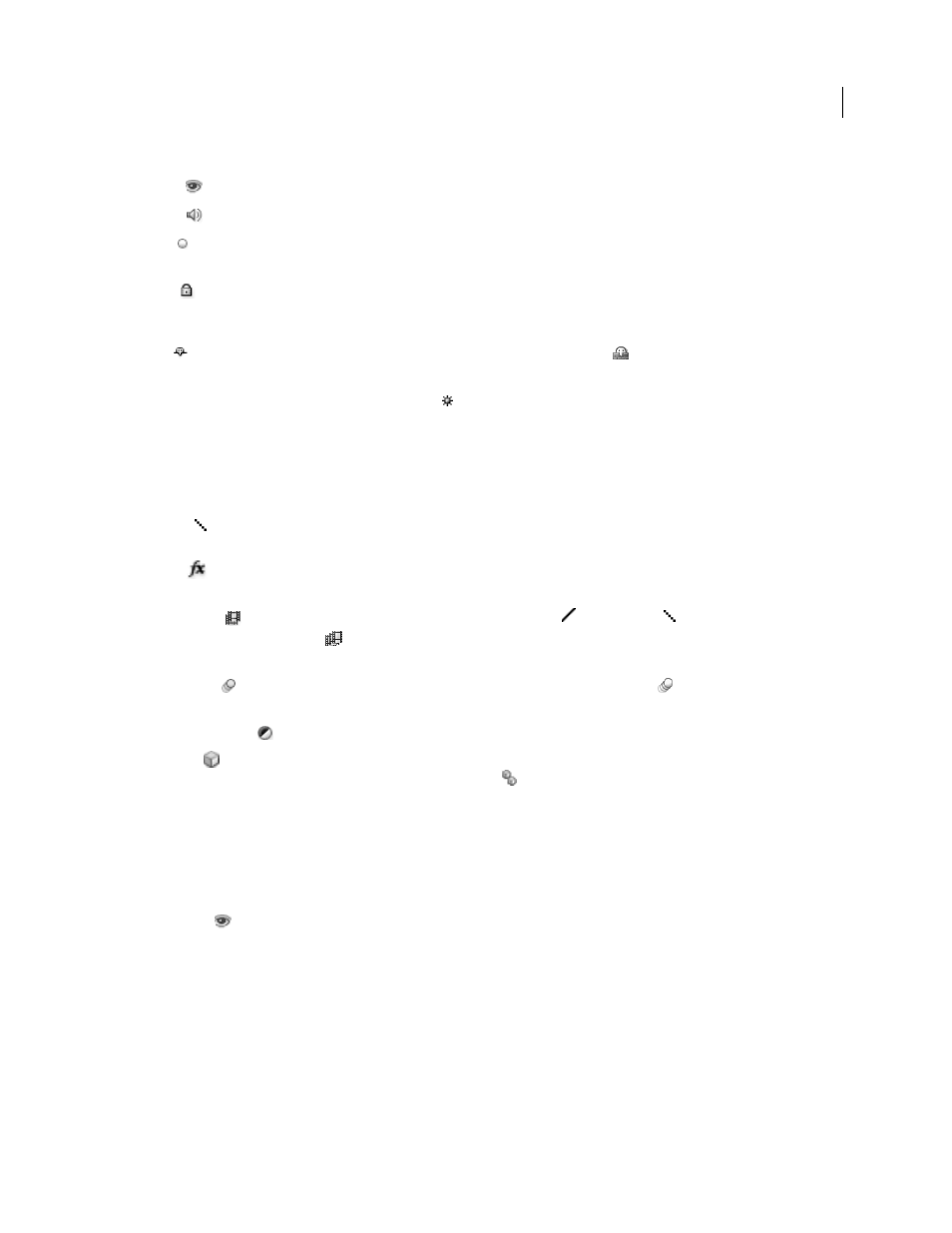Adobe After Effects CS4 User Manual
Page 161

155
USING AFTER EFFECTS CS4
Layers and properties
Last updated 12/21/2009
Switches in the A/V Features column
Video
Toggles layer visuals on or off. (See “
Toggle visibility or influence of a layer or property group
Audio
Toggles layer sounds on or off.
Solo
Includes the current layer in previews and renders, ignoring layers without this switch set. (See “
Lock
Locks layer contents, preventing all changes. (See “
Switches in the Switches column
Shy
Hides the current layer when the Hide Shy Layers composition switch
is selected. (See “
Collapse Transformations/Continuously Rasterize
Collapses transformations if the layer is a precomposition;
continuously rasterizes if the layer is a shape layer, text layer, or layer with a vector graphics file (such as an Adobe
Illustrator file) as the source footage. Selecting this switch for a vector layer causes After Effects to rerasterize the layer
for each frame, which improves image quality, but also increases the time required for previewing and rendering. (See
“
Render order and collapsing transformations
” on page 64 and “
Continuously rasterize a layer containing vector
Quality
Toggles between Best and Draft options for layer quality for rendering, including rendering to the screen
for previews. (See “
Layer image quality and subpixel positioning
Effect
Select to render the layer with effects. The switch does not affect the setting for individual effects on the
layer. (See “
Delete or disable effects and animation presets
Frame Blend
Sets frame blending to one of three states: Frame Mix
, Pixel Motion
, or off. If the Enable Frame
Blending composition switch
is not selected, the frame blending setting of the layer is irrelevant. (See “
Motion Blur
Toggles motion blur on or off for the layer. If the Enable Motion Blur
composition switch is not
selected, the motion blur setting of the layer is irrelevant. (See “
Adjustment Layer
Identifies the layer as an adjustment layer. (See “
3D Layer
Identifies the layer as a 3D layer. If the layer is a 3D layer with 3D sublayers—as is the case for a text layer
with per-character 3D properties—the switch uses this icon:
3D layers overview and resources
More Help topics
Toggle visibility or influence of a layer or property group
The Video
(eyeball) switch for a layer controls whether the visual information for a layer is rendered for previews
or final output. If the layer is an adjustment layer, the Video switch controls whether the effects on the layer are applied
to the composite of the layers below it. If the layer is a camera or light, the Video switch controls whether the layer is
on or off.
Several components of layers—such as paint strokes, path operations in shape layers, and text animators in text
layers—each have their own Video switches. You can use the Video switch to toggle the visibility and influence of these
items individually.
•
To turn off the visibility of a layer deselect the Video switch for the layer.
•
To select the Video switch for all layers, choose Layer
> Switches
> Show All Video.
